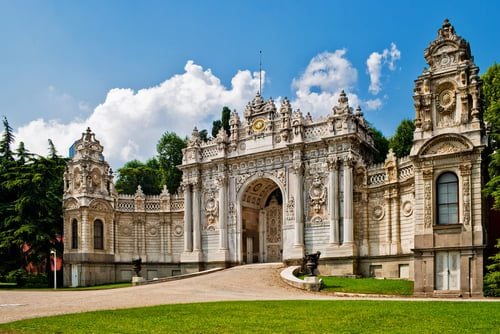One of the most populous cities in Europe, Istanbul embodies the former imperial grandeur of the Romans, Byzantines, Latins, and Ottomans. Byzantium, Constantinople – the city had different names in different eras. Each left its unique mark on the centuries-old architecture of buildings, striking with their majestic beauty and intricacy.
Overall, the entire city is an open-air museum, and exploring it is an exciting journey. The Golden Horn divides the city into European and Asian parts. The unique palaces of Istanbul are the main attractions that draw enormous interest from tourists.
Topkapi

The vast Topkapi Palace complex, built during the reign of Sultan Mehmed II in 1479, became a symbol of the Ottoman victory after capturing Constantinople. The former palace symbol of Byzantine power was demolished, as were many other structures. The name Topkapi means “Cannon Gate”: every departure of the sultan was accompanied by a cannon shot. Essentially, it was a mini-city located on an area of 700,000 square meters with four separate courtyards and various service and residential buildings.
The luxurious palace buildings reflect a mixture of different architectural styles. Over the centuries, they suffered from earthquakes and fires. Each new reconstruction added new elements in the spirit of the times. Today, Topkapi is a museum showcasing the past lives of 25 Turkish sultans. Upon entering the main “Cannon Gate,” you will see a magnificent fountain (1728).
The courtyards are connected by monumental gates, each an architectural masterpiece. The luxurious cypress garden, prison tower, palace kitchens with a vast collection of porcelain (7th-19th centuries) leave a lasting impression. The display of precious jewelry and gem-studded artifacts is awe-inspiring. The sultans’ kaftans, the sultans’ wives’ clothes, prayer rugs, and many other luxury items are impressive.
Dolmabahçe
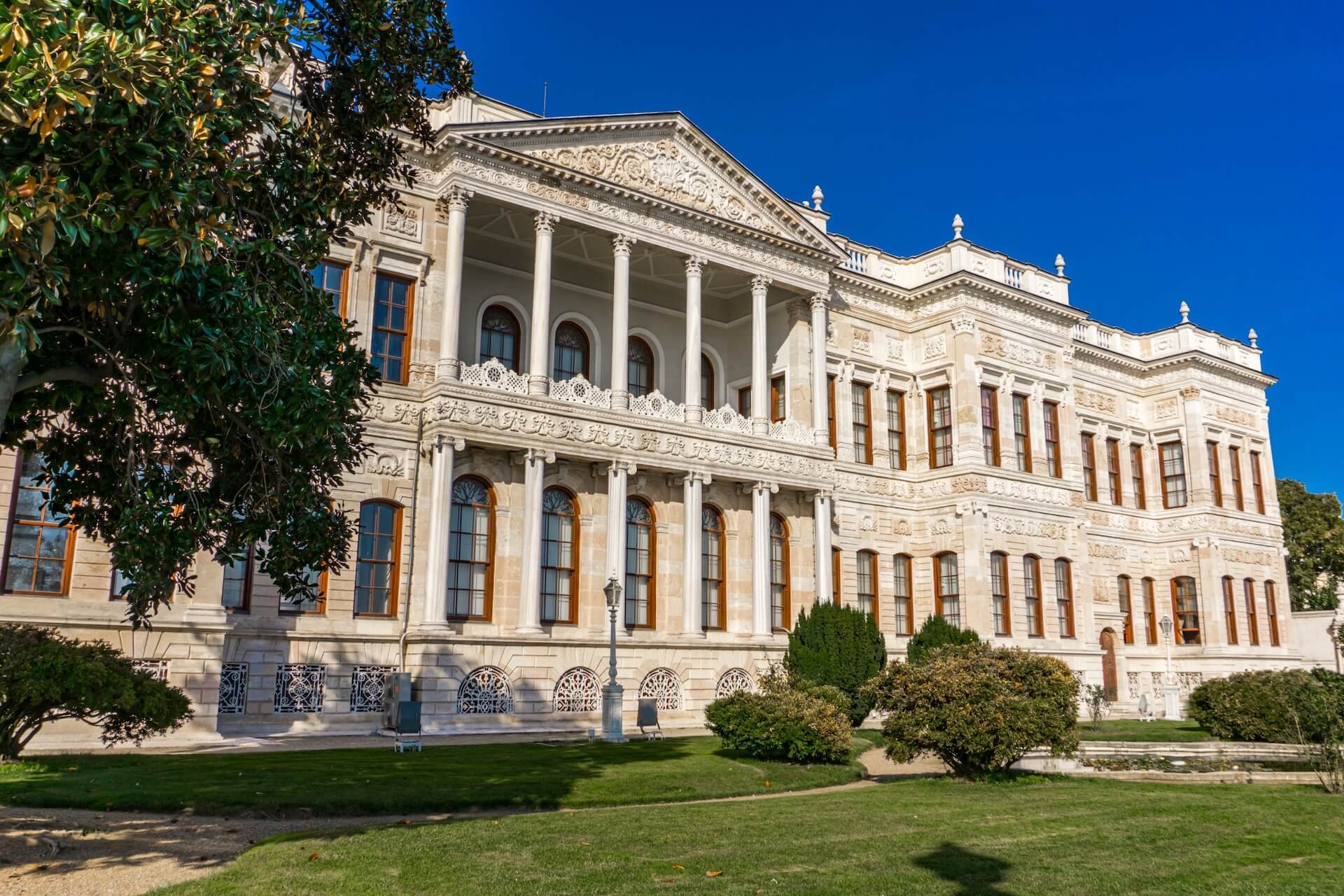
One of the most picturesque districts of the city, Beşiktaş, is adorned with the architectural wonder – Dolmabahçe Palace. Built over 13 years for 5 million gold pounds, this architectural masterpiece holds the record for the amount of gold (14 tons) and silver (40 tons) used in its decoration.
Until 1924, the palace was the residence of sultans. From 1924 to 1938, it was used by Atatürk (the founder of the Turkish Republic) as a summer residence where important political meetings were held. A tour of Dolmabahçe’s halls immerses you in a world of incredible Eastern luxury and opulence.
In the hall, an unusually beautiful and designed chandelier stuns visitors, and in the exhibition hall, there is a stunning collection of jewels, porcelain, and crystal, including the Crystal Staircase. In the most luxurious room – the Süfera Hall, a huge handmade Iranian carpet (9×10 meters) attracts attention. The bear skin, a gift from Russian Emperor Nicholas II, is also of interest.
Fifty-six royal columns support the ceiling of the hall, to which a unique massive chandelier – a gift from Queen Victoria – is attached. Here are 40 paintings by Aivazovsky, whose work was appreciated by Sultan Abdul-Aziz. (The artist, who received the Diamond Order of Osman from the sultan, later threw the award into the sea as a protest against the Armenian genocide.) The harem and Abdul-Aziz’s bedroom decoration is impressive.
Yıldız
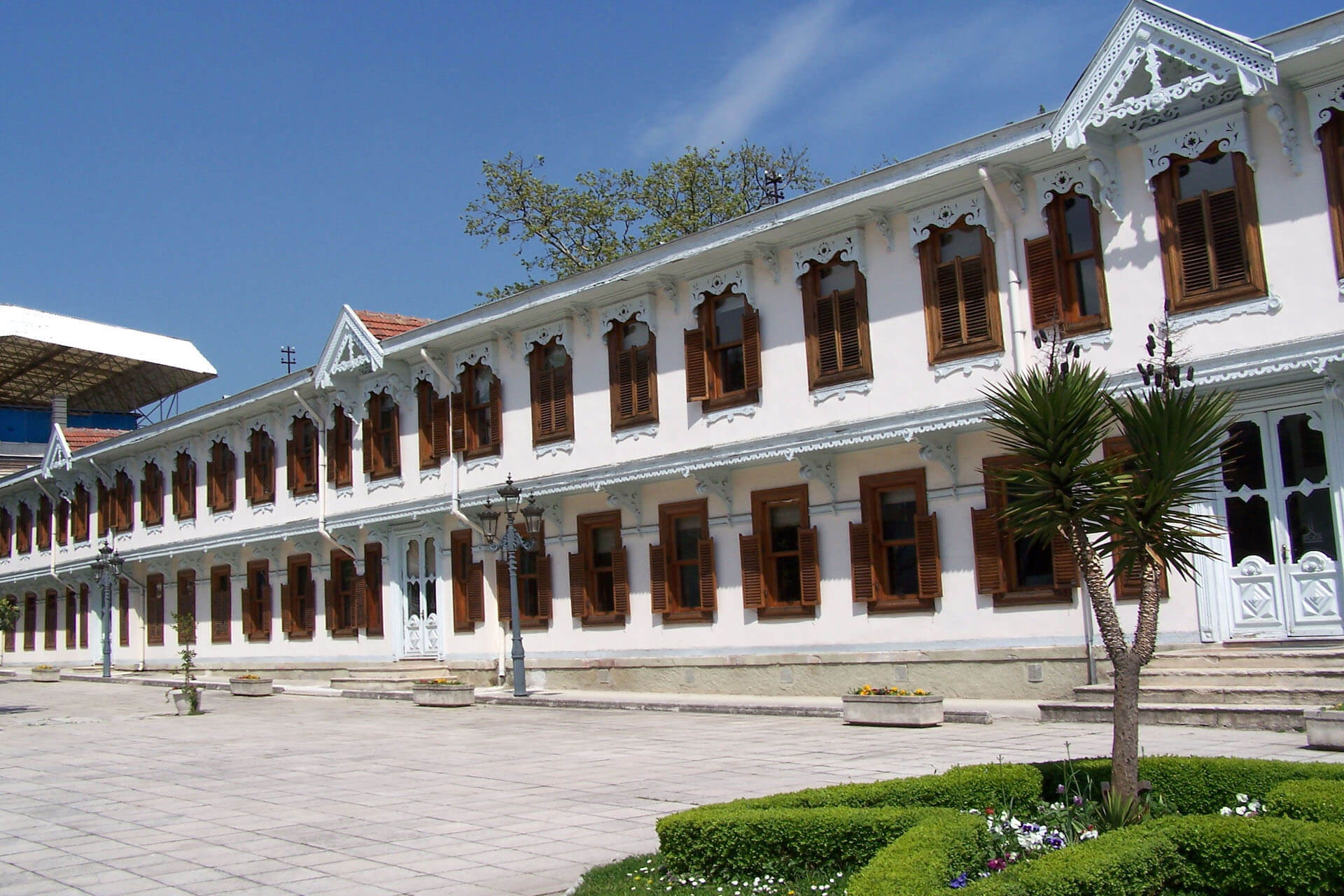
A favorite place for walks for locals and tourists alike is the Yıldız Park and Palace complex, located on the Bosphorus shore. Tropical flora, exotic flowers, wonderful alleys, palaces, and pavilions amaze visitors.
The jewel of the complex, the Yıldız Palace (Star), is one of the city’s pride and landmarks. Separated from the rest of the park by a winding fence, the palace astonishes with its dazzling beauty. The synthesis of several architectural styles made this magnificent building a true masterpiece of palace construction.
The interior of rooms and halls is as delightful as the exterior design. The Ceremonial Hall stands out with its luxurious beauty. The shining stars of the ceiling, the floor covered with an exclusive carpet woven from silk threads, captivate visitors.
The Pearl Salon, whose magnificent door is decorated with mother-of-pearl patterns, is also worth admiring. Yıldız is not divided into male and female halves like other sultan residences.
Maslak
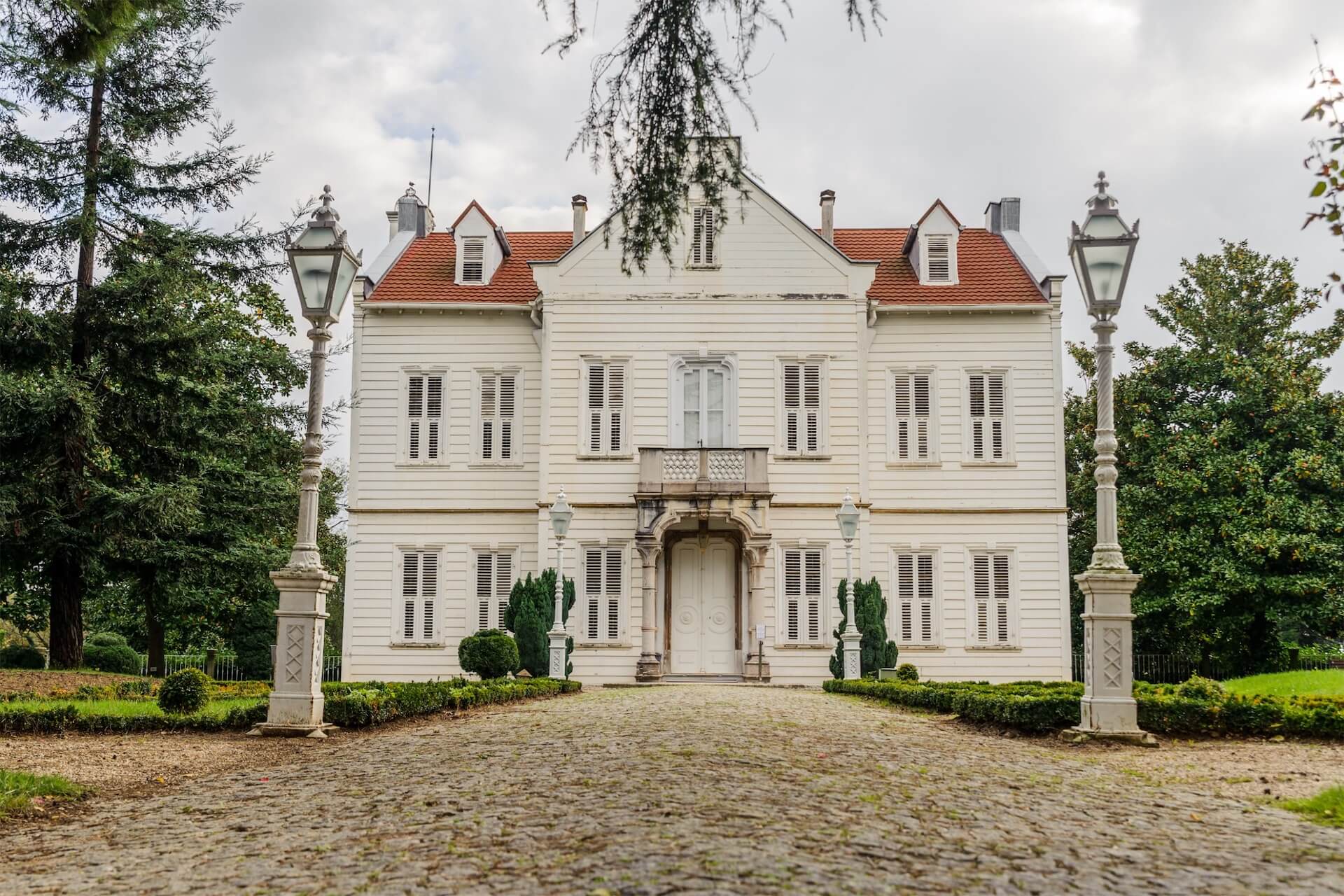
The unique architectural complex of Maslak pavilions was built on the Bosphorus shore in the late 19th century. Only four pavilions (mansions) remain today, captivating with their Ottoman-style architecture and decor. They are located in a large forest park, a former hunting residence of Ottoman sultans.
The Kasr-ı Hümayun Palace – a two-story building with an attic and a balcony impresses with its appearance. The interior decor is enchanting: numerous frescoes adorn the walls and ceilings of all rooms. Here was the working office of the sultan and his sleeping quarters. Today, it is a museum where visitors can feel the spirit of past eras. The Çadır Pavilion (Tent Pavilion) at the edge of the forest park, made of wood, is a two-story octagonal mansion.
Its architecture is an example of Ottoman wooden construction. The Paşalar Dairesi (Generals’ Quarters) – a one-story building, deserves attention for its Turkish baths with richly decorated interiors. The Mabeyn-i Hümayun (Private Apartments) served as a summer residence.
Çırağan
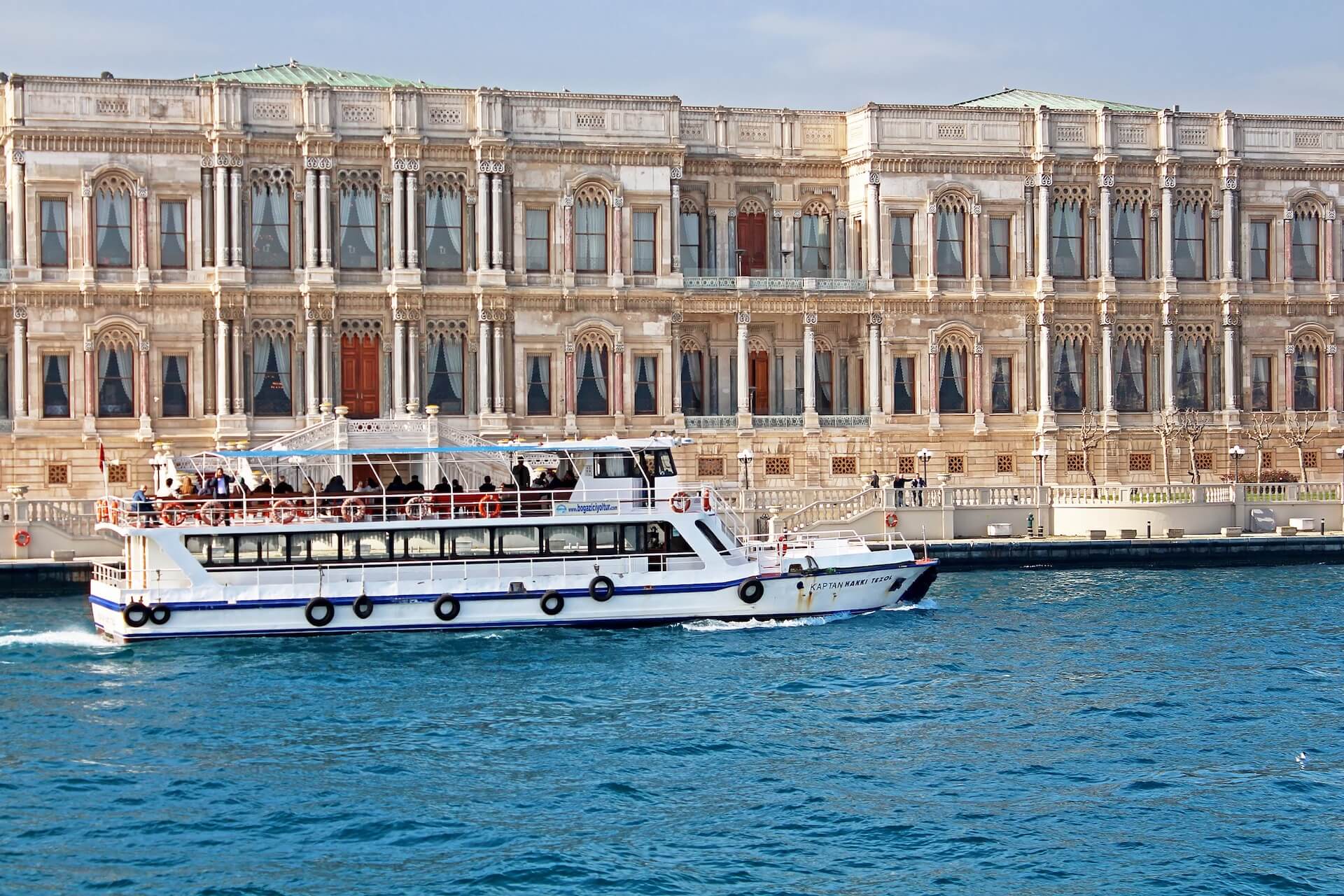
On the European side of the Bosphorus (Beşiktaş district), stands the luxurious grand structure – the five-star hotel “Çırağan Palace Kempinski” or Çırağan (Torch) Saray. It offers guests the most expensive apartments in the world ($15,000). Each room is a royal chamber of the 21st century.
The palace hotel impresses with the level of service and range of services, the beauty of decoration, and the uniqueness of design. But the history of Çırağan’s creation is particularly interesting. During the reign of Abdul-Aziz, the palace of his dreams was built (1876). Architect Balyan, who visited Arab countries and Spain, became acquainted with the Moorish architectural style and embodied it in the project of the magnificent palace. It was connected by a marble bridge to another palace – Yıldız.
Çırağan became the summer residence of Abdul-Aziz for a short time: soon the sultan was found dead. In 1910, the palace was almost destroyed by a severe fire. Only in 1991 was the building’s skeleton restored, turning it into an elite hotel and architectural landmark.
Beylerbeyi
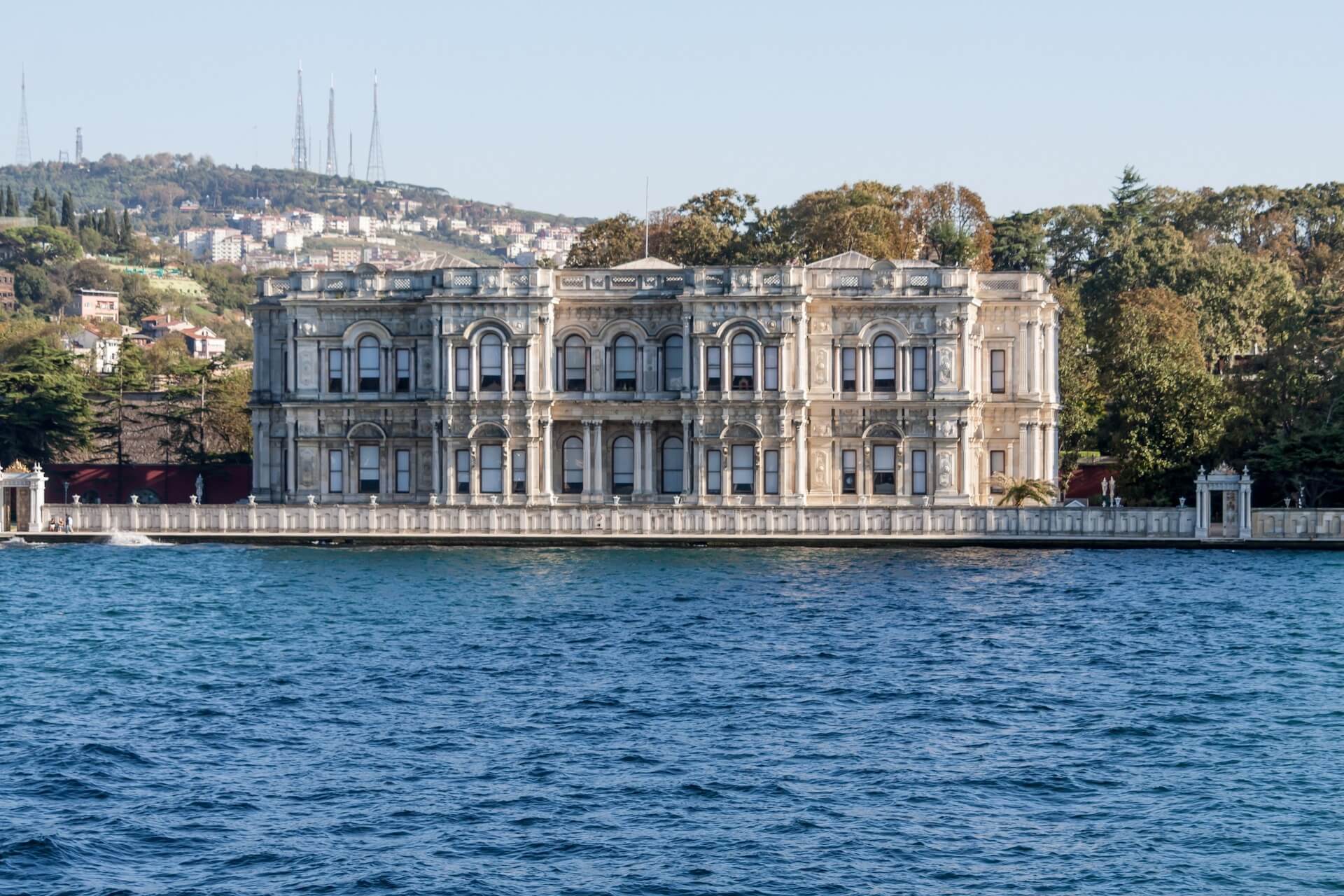
A true architectural marvel of classical Baroque – Beylerbeyi Palace is located on the Asian side of the Bosphorus in the district of the same name. An extraordinarily picturesque area with blooming magnolias, chestnuts, laurels, and flower lawns surrounds the white marble palace. A pedestrian bridge to the Bosphorus runs over this beauty.
Among the park greenery shines the blue mirror of a large pool, with elegant sculptures installed in various corners. This magnificent neo-baroque structure was built during Abdul-Aziz’s reign (1861-1865) as a summer sultan’s residence, where meetings with foreign guests took place. A long stone tunnel with an arched ceiling leads to the palace. The interior decor of the six ceremonial halls and 26 rooms features European and Eastern decorations.
The luxurious Bohemian chandeliers, huge handmade carpets, beautiful floor vases, and original clocks are breathtaking. In some rooms, the floor is covered with Egyptian reed mats. In one of the ceremonial halls, there is a magnificent fountain that acts as an air conditioner.
Küçüksu
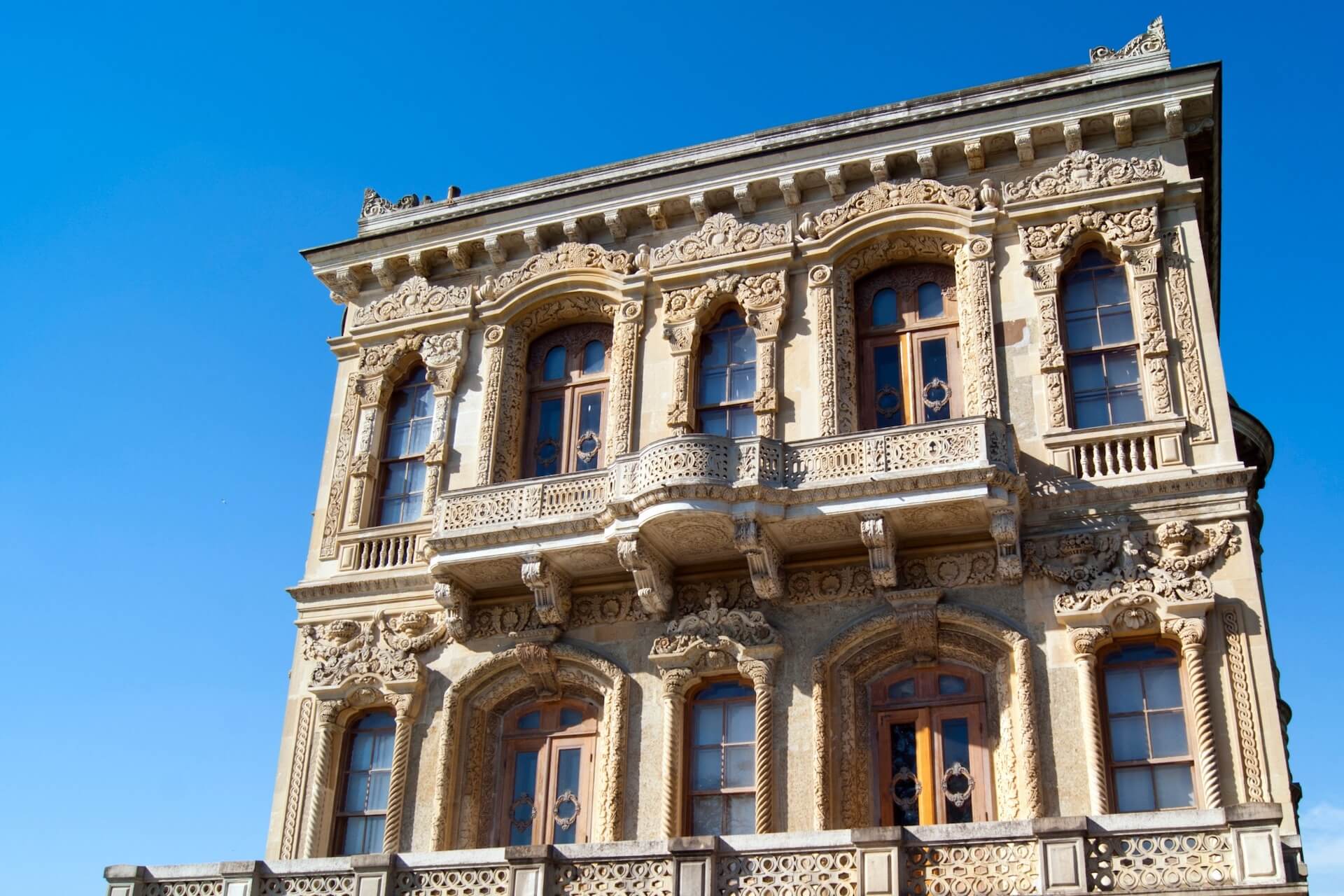
On the bank of the small Göksu River, which flows into the Bosphorus, is the small palace of Göksu Kasrı (Palace of Heavenly Water). It can be figuratively called the “younger brother” of Dolmabahçe – both palaces were built according to the project of the Turkish-Armenian architects Balyan. The appearance of Küçüksu shows common features, from the architectural style to the decor details.
In general, the castle is a bright example of Ottoman Baroque with elements of Rococo, built in 1856-57. The facade of the three-story building (basement, 1st and 2nd floors) amazes with the beauty of the external decoration – intricate wood carving. In the surrounding garden, there is a fountain made in the Baroque style and a pool.
The interior of the castle is also wonderful: the baroque staircase, rare table, Iranian, Persian, and Turkish carpets, huge mirrors in picturesque frames. Massive chandeliers made of Czech glass, reflecting in mirrors, gold-painted ceiling create a sparkling background. Priceless masterpieces by Aivazovsky adorn the walls of the halls. A unique item in the museum is an extraordinarily beautiful table made of wood by the sultan’s hands without a single nail.
Tekfur
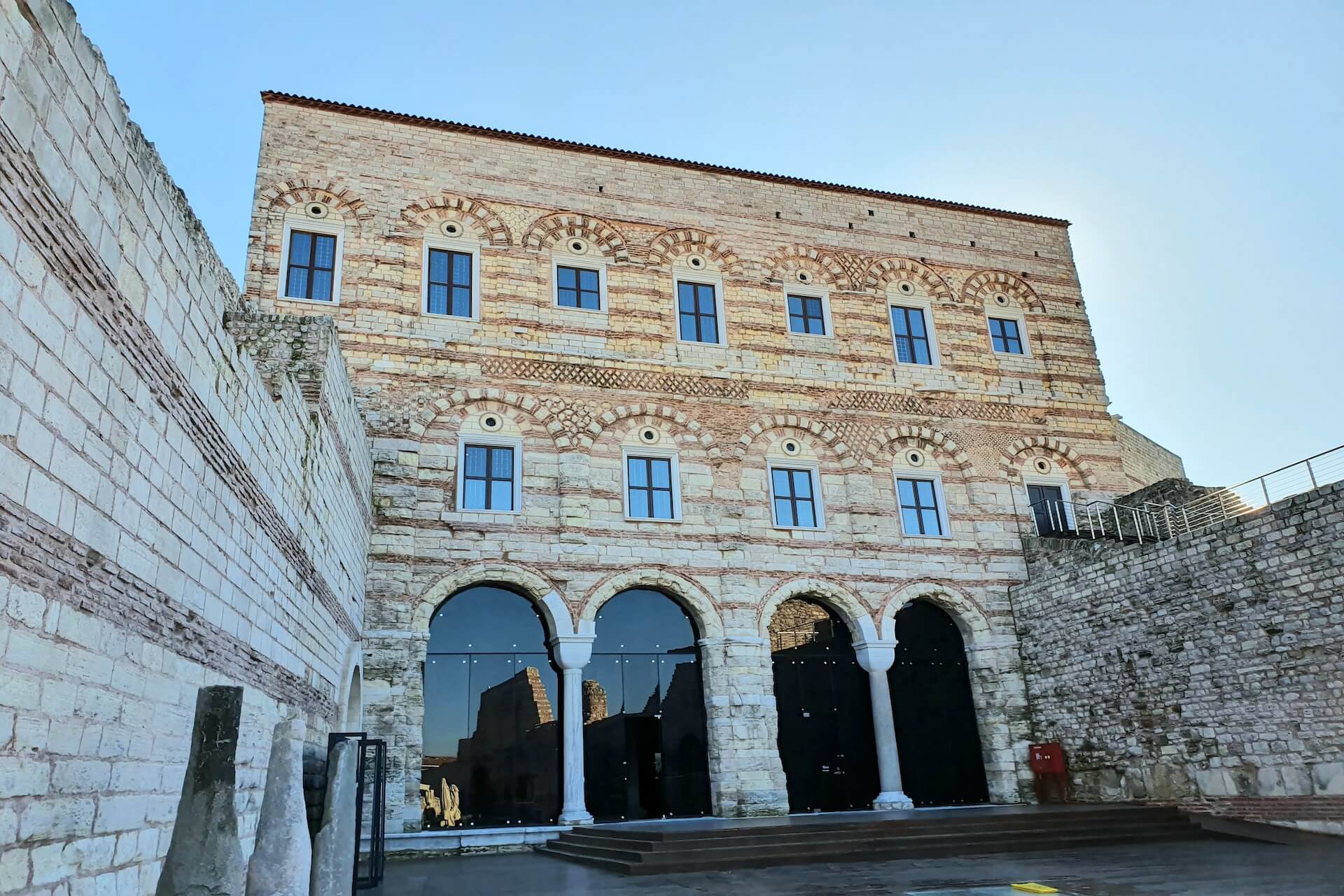
Among the architectural monuments of the Byzantine era in Istanbul is the Tekfur Palace. Essentially, these are just the remains of the ruins of the once grand complex of administrative buildings of the 13th century – Blachernae. Tekfur is the best-preserved among them, and its architecture gives an idea of the Byzantine construction style.
After the Ottomans captured Constantinople, they plundered this palace and named it Tekfur (king). It housed the emperor’s residence. In a sign of contempt for the fallen emperor, they turned his apartments into a menagerie. African predators (lions, cheetahs, hyenas) occupied the imperial halls.
Later, workshops for the production of clay pottery and a shelter for the homeless were located here. Today, only the walls of the once magnificent building of white and red brick remain. The high arched openings, intricately laid lintels, and intricate ornaments suggest that Tekfur was an architectural masterpiece.
Ihlamur

In a picturesque park with century-old linden trees are two beautiful buildings – the Ihlamur Palace complex (Palace under the Lindens). They were built in the mid-19th century as the residence of Sultan Abdulmejid, designed by N. Balyan – the author of Dolmabahçe. The Merasim Pavilion served as a venue for various ceremonial meetings with high-ranking guests from Europe.
The one-story building stands on a high base of white sandstone and marble. The European architectural style in its design is combined with the Eastern richness of decorations on the facade. The interior decor also predominantly features European motifs, except for Eastern carpets.
The second pavilion, Mayet, consisting of four halls, was occupied by the sultan with his concubines and courtiers. The interiors of Mayet are designed in the Turkish style with inherent Eastern luxury. Now, after extensive renovation in the 1980s, both palaces are museums with interesting exhibitions.
İbrahim Pasha Palace
On the central Sultanahmet Square stands the İbrahim Pasha Palace – a symbol of the sultan’s recognition and respect for his comrade. The grand Ottoman architectural structure was gifted by Suleiman the Magnificent to his vizier and friend İbrahim Pasha as a token of gratitude for his loyal service to the state.
The colossal building was constructed according to the project of the famous architect Sinan (Mihrimah Sultan Mosque) in the early 16th century. Suleiman the Magnificent, in a sign of special honor, became related to his friend by giving his sister Hatice to him as a wife, presenting the magnificent palace-residence as a gift.
Various social events and ceremonial ceremonies began to be held here. Today (since 1938) İbrahim Pasha Palace has been turned into the Museum of Turkish and Islamic Art. The museum exhibits are so unique and valuable that they have been awarded prizes by the European Council and UNESCO.
Ancient manuscripts (8th-19th centuries), gold, platinum, silver jewelry, rare precious stones, ancient ceramic items, and more. The flow of tourists here is unceasing.
Adile Sultan Palace
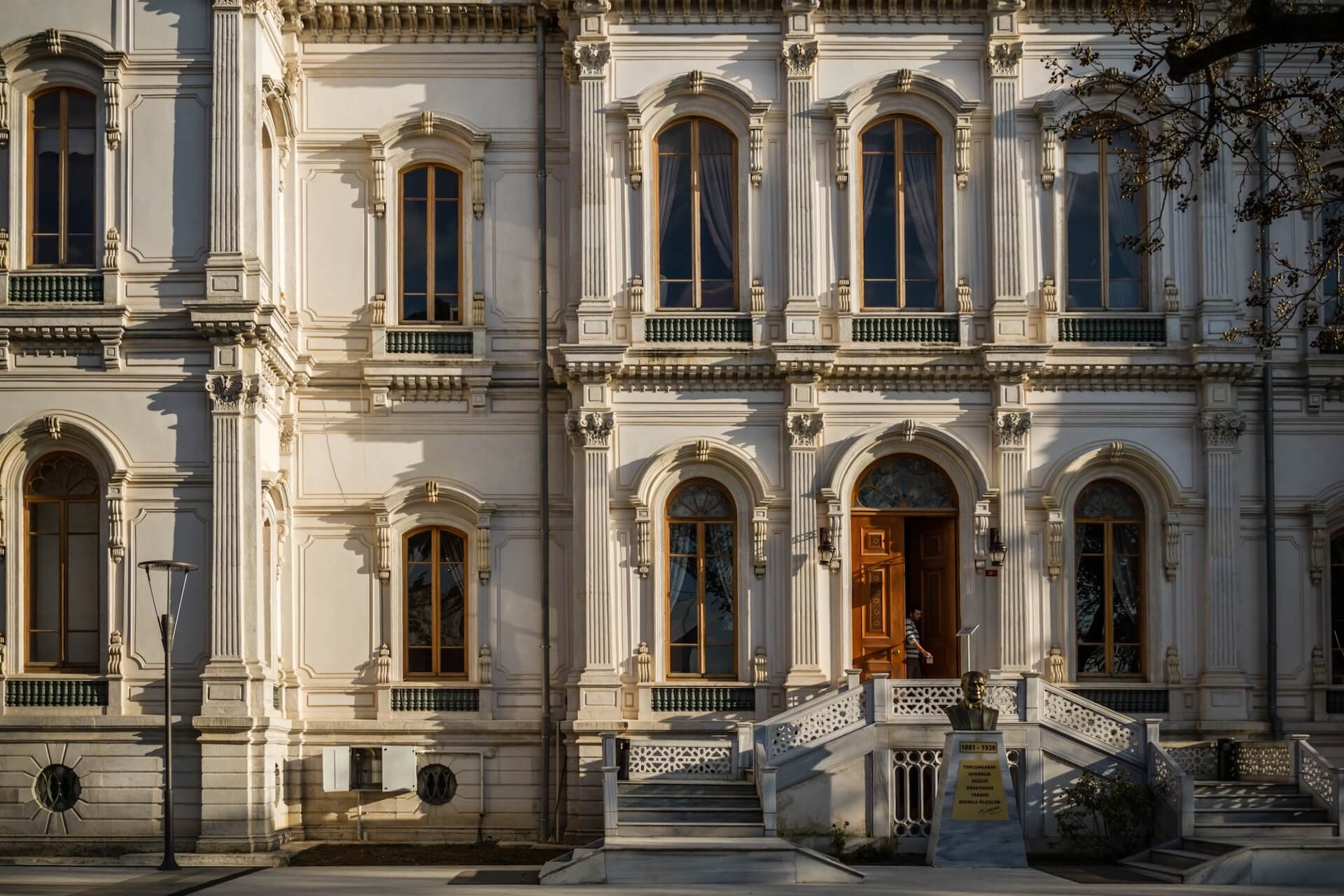
In the Asian district of Kandilli is another architectural creation from the series of projects by the Balyan brothers – the Adile Sultan Palace. It was built for Sultan Abdul-Aziz’s beloved sister on the site of the former pavilion, gifted by her elder brother Abdulmejid.
The new palace surpassed the previous pavilion in beauty and scale (area of 5,625 square meters, more than 60 rooms). The Ottoman princess Adile – a recognized poetess, wife of Vizier Mehmed Ali Pasha enjoyed a special favor in the family. She was the only one with her residence, which she bequeathed to a girls’ lyceum.
After a fire in 1986, the building was severely damaged and was restored only in 2006 with financial support from billionaire philanthropist Sabancı and the Lyceum Alumni Foundation. Now the Adile Sultan houses the Sabancı Culture and Education Center, where conferences, seminars, and ceremonial events are held. Here, celebrities celebrate weddings, and films (“Ezel,” “Kırımly,” “Sıla”) are shot.
Esma Sultan Mansion
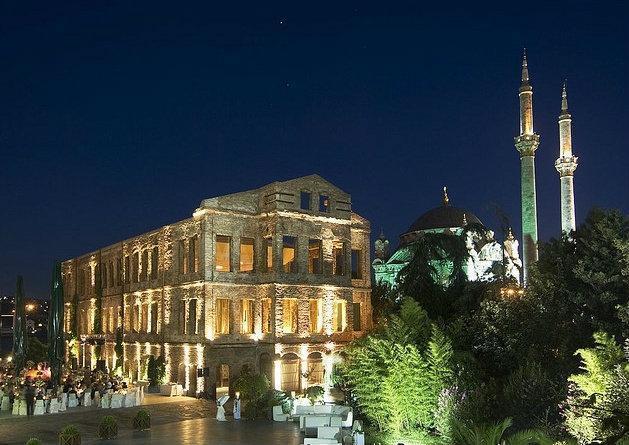
Each sultan’s palace in Istanbul is shrouded in various rumors and legends about their former owners. The Esma Sultan Mansion – one of the nine daughters of Abdul Hamid I, Esma, did not escape such a fate. The history of this three-story building still excites Istanbulites and tourists.
The image of the captivating sultan is captured in films and literature. She is portrayed as a very emancipated, extravagant woman, free from prejudices. In the late 18th century, a three-story palace was added to her residences, reflecting the “Golden Age” of Istanbul in its architecture.
Today, the building’s exterior has been fully restored according to the original project. The interior is made of steel and glass in a modern style. The former residence of Esma is owned by the Marmara hotel network and serves as a venue for ceremonial events and official-political meetings in the famous Beşiktaş district.
Aynalıkavak
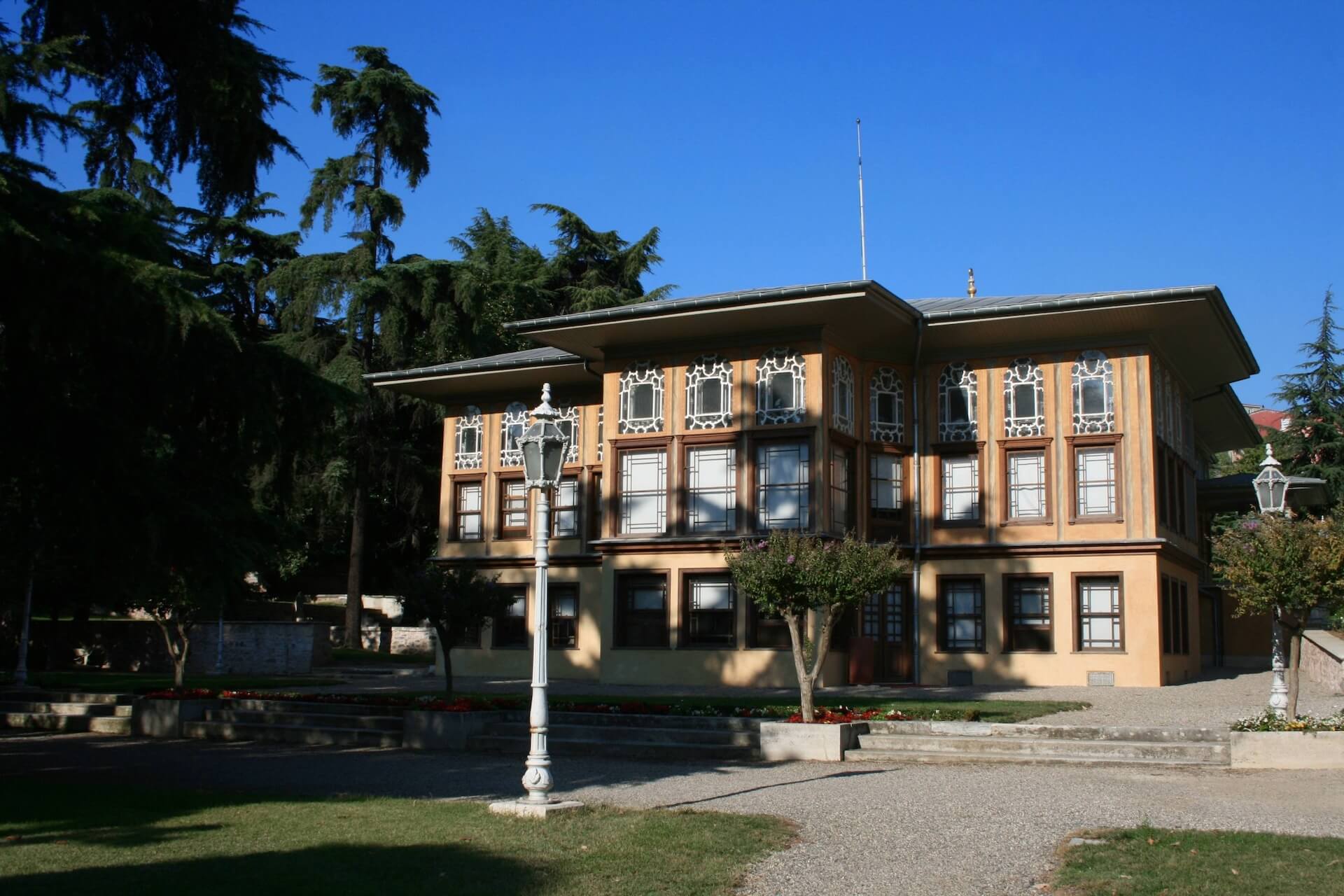
The Aynalıkavak Pavilion reminds us of the former grandeur and extraordinary luxury of the life of Ottoman sultans. It is located on the shore of the Golden Horn bay (Hasköy quarter). This is the only pavilion left from the former summer residence of the Ottoman sultans – the Aynalıkavak palace complex (17th-19th centuries). The luxurious flower garden in front of the palace harmonizes in beauty with the splendid monument of classic Ottoman architecture.
In 1985, a museum was opened here. The high Venetian mirrors that adorn the halls gave the former name Terzane a new name – Aynalıkavak (Mirror Poplars). In the basement of the palace, national musical instruments are presented. This is a tribute to the memory of Selim III, a talented composer-sultan who made a significant contribution to Turkish musical culture.

